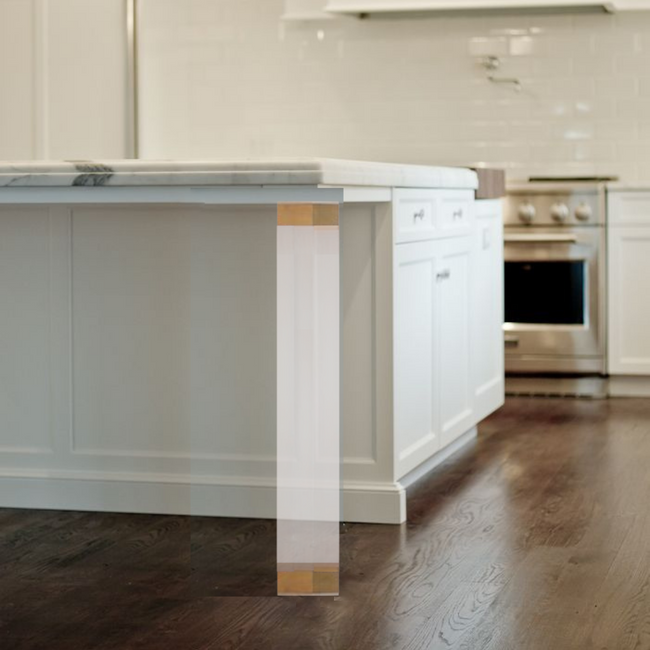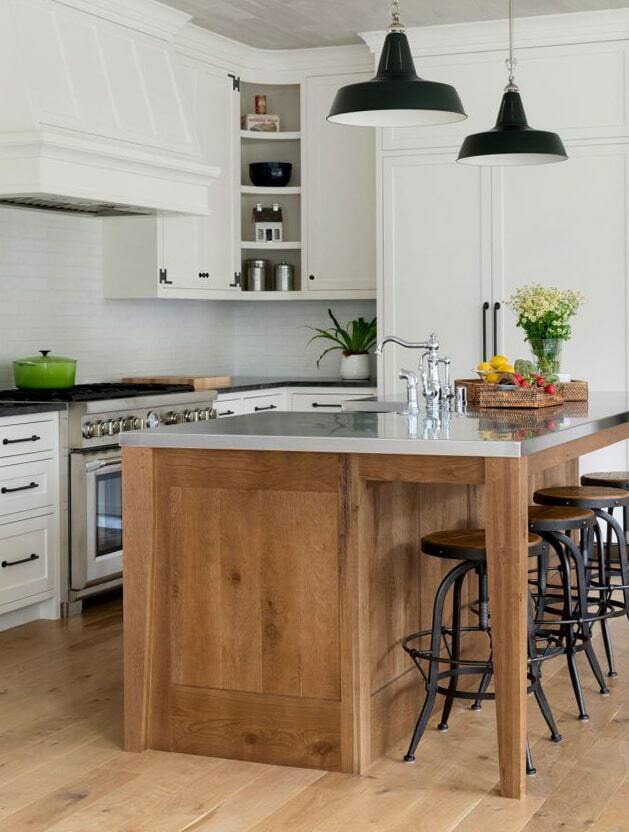The Significance of a Sturdy Kitchen Island Leg in Developing a Practical Cooking Area
A sturdy cooking area island leg offers as a fundamental element in developing a functional cooking environment, supplying needed support for both the countertop and different kitchen tasks. As kitchen areas progress into multifunctional areas for cooking, dining, and socializing, the choice of materials and style factors to consider for island legs comes to be increasingly vital.
Benefits of Sturdy Island Legs
Providing necessary support, durable cooking area island legs play a crucial role in improving the performance and sturdiness of cooking area islands - kitchen island leg. These legs not only birth the weight of the kitchen counter and any additional things positioned on the island, but likewise add to the general security of the framework. A well-supported cooking area island makes sure that it continues to be useful and upright, also under hefty usage, which is especially essential in active kitchen area settings
Moreover, strong island legs can improve the aesthetic appeal of the kitchen. They offer a strong structure that can enhance different style styles, from modern-day to conventional. This adaptability enables homeowners to personalize their kitchen islands according to individual preference while ensuring that the structural stability continues to be uncompromised.
In enhancement to their encouraging function, robust kitchen island legs can also enhance safety and security. Eventually, investing in strong kitchen area island legs is necessary for a practical and visually pleasing cooking area.
Materials for Cooking Area Island Legs
When choosing products for cooking area island legs, sturdiness and visual appeal are vital aspects to think about,. One of the most common products include hardwood, steel, and engineered timber, each offering distinct advantages.
Wood, such as cherry, maple, or oak, is a traditional option as a result of its stamina and classic appeal (kitchen island leg). It can withstand significant weight and is immune to wear, making it excellent for high-use kitchen area environments. Furthermore, wood can be discolored or repainted to match numerous kitchen area designs
Metal legs, frequently crafted from stainless-steel or wrought iron, offer a industrial and modern-day appearance. They are incredibly solid and can sustain considerable loads while being resistant to dampness and heat, which is useful in a cooking area. Metal legs can additionally be easily cleaned up, boosting their practicality.

Design Factors To Consider for Stability
The option of products for cooking area island legs directly influences the layout considerations for stability. When developing a kitchen area island, it is paramount to assess the weight-bearing capability of the selected materials. Heavier products, such as solid timber or steel, normally offer higher stability, especially under the anxiety of day-to-day usage.
In addition, the leg layout have to include correct geometry to improve stability. A wider base boosts the assistance location, reducing the danger of tottering or tipping. Factor to consider see it here needs to additionally be provided to the elevation of the legs; disproportionate leg lengths can cause imbalance, endangering the overall stability of the island.
In addition, the circulation of weight throughout the island is vital. Making sure that the leg positioning lines up with the heaviest parts, such as counter tops and appliances, will better boost stability.
Upkeep Tips for Durability

Depending on the product of the legs-- whether wood, metal, or composite-- proper cleansing techniques ought to be used. Steel legs might require a light polish to prevent rust and maintain their appeal.
Furthermore, tightening up bolts and screws on a regular basis can make sure stability and stop tottering. Take into consideration strengthening the basics legs with extra braces or sustains to improve sturdiness if the kitchen island experiences heavy use. Using a protective finish or sealer can secure versus wetness and spots, prolonging the life expectancy of the legs. By following these maintenance ideas, home owners can ensure their kitchen area island legs continue to be functional and robust for years to come.
Choosing the Right Leg Design
Regular upkeep ensures that cooking area island legs continue to be practical and durable, but selecting the ideal leg style is similarly essential for both visual appeals and support. The selection of leg style can dramatically affect the overall style and harmony of your cooking area.

Functionality is an additional important element. For circumstances, thicker legs or those with a strong base can support much heavier kitchen counters and tools, boosting the island's energy. Conversely, slim legs might produce a ventilated appearance, appropriate for lighter layouts yet potentially less encouraging.
Verdict
In summary, the importance of strong kitchen area island legs can not be overstated in the creation of a practical food preparation location. These legs offer essential support, boost security, and contribute to the overall aesthetic of the kitchen look here area.
A sturdy kitchen island leg serves as an essential component in developing a useful food preparation environment, giving needed assistance for both the countertop and various kitchen area activities.Providing important support, strong kitchen island legs play an essential duty in boosting the capability and sturdiness of kitchen islands. Eventually, spending in sturdy kitchen area island legs is essential for a practical and aesthetically pleasing cooking location.
Consideration must also be given to the elevation of the legs; disproportionate leg lengths can lead to inequality, compromising the general security of the island.
Wooden legs offer heat and a classic appearance, while metal legs supply a industrial and contemporary feel.